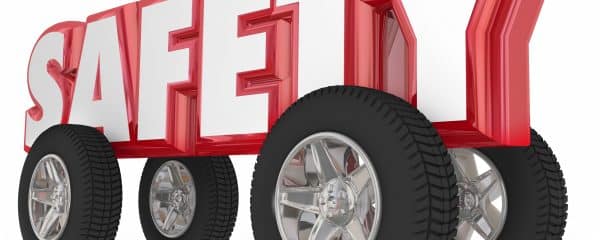Last year’s fatal crash on the A34, when a lorry driver was jailed for causing death by dangerous driving, was a prime example of this....
Considerable strides are being made, however, to raise the collective standards of safety, work-related road risk and compliance. Many organisations are now recognising and addressing their ability to raise standards of fleet operations across their supply chains.
While demonstration is better than proclamation, the industry, which has many compelling advocates, must continue working hard to make its voice heard and to communicate this positive message.
As a result of its efforts – and the desire many fleet operators to improve fleet safety – we are seeing more and more vehicles on the road with a high specification that take account of vulnerable road users (VRUs).
Many HGVs, for example, are now fitted with class V and VI mirrors to increase the field of vision, audible warning devices to warn VRUs when a vehicle is turning left and proximity sensors to warn a driver when a VRU is alongside them. Warning signage is also more prominent to remind VRUs of the dangers around larger vehicles. Vehicles over 3.5t are now often being fitted with side under run bars to protect VRUs should they come into contact with the vehicle. All of these are fitted at a cost to the fleet operator.
Increasingly, fleets are also getting a better understanding of how they are performing through the use of telematics. Operators are able to baseline performance and target areas of improvement based on real time information about routes. Providing optimal routing can also help the driver to avoid higher risk areas such as schools.
The vehicle is just one area of consideration however. Arguably of greater importance is the driver. Driver behaviour systems are available to monitor the performance of drivers, from speeding to harsh braking, to enable more focussed training to be provided.
At FORS we provide specific Driver CPC accredited training for urban environments. For HGVs, buses, and coaches we provide Safe Urban Driving training and Van Smart driver training for vehicles under 3.5 tonnes. These classroombased course help professional drivers understand how to be safer and more diligent behind the wheel. As part of the training they also get to experience being a VRU when they take to the streets on bikes.
There is still much to do though as the recent series of fatalities between cyclists and commercial vehicles have shown. The industry is watching carefully for the outcome of the Transport for London (TfL) consultation on its Direct Vision star rating ‘standard’. It is of course better to have direct vision with minimal blind spots than to ‘fill’ those blind spots by secondary means (mirrors and cameras). Consequently, we would encourage the take up of these new vehicle designs and applaud the work that TfL and Construction Logistics and Cyclist Safety (CLOCS) have done in this area.
At FORS we’ve been looking at how we can further support our members to raise their standards. There’s lots planned for the year ahead, including the provision of additional training through our new FORS Professional brand. Managers will see an update to the hugely popular FORS Practitioner course that helps transport managers understand what best practice looks like for their roles, while helping them to refresh and improve their skills. For drivers, we will also be bringing out a new eLearning course to further support their learning.










